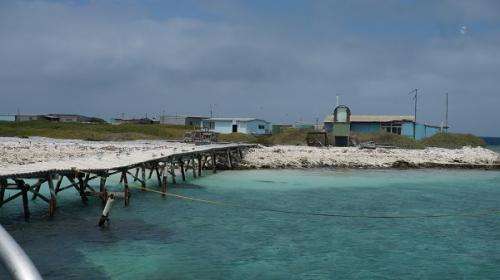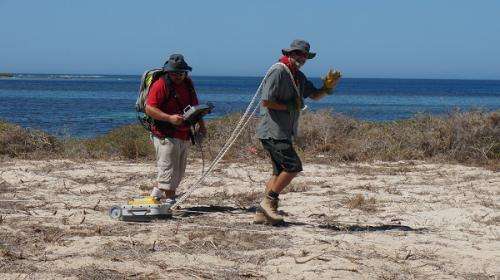Ground surveying digs deep for Batavia secrets

A group of WA researchers are hopeful they will find remains from the wreck of the infamous Dutch ship Batavia following the discovery of a tooth last year on Beacon Island off the Mid West coast.
The tooth dates back to the 17th century and suggests a possible burial ground nearby.
Earlier this year, researchers from the WA Museum together with the UWA Geophysics department searched an area of the island measuring 25m by 40m using geophysical remote sensing.
UWA Associate Professor of Geophysics Jeffrey Shragge says the site is being cleaned up and removing human infrastructure will reduce interferences with remote sensing instruments.
A/Prof Shragge says concrete slabs poured 50-60 years ago will be removed and are believed to be covering an archaeological site.
"We know [archaeological objects] are buried there and because these areas have had the slabs on them, they are much more pristine in terms of archaeology," he says.
"We're going back there in 2015 to collect data over these areas and they're going to be prime targets for the archaeologists to investigate."
A/Prof Shragge says using geophysical remote sensing is done by acquiring a measurement at the surface like ground penetrating radar (GPR).
"I think the closest analogy to that would be medical ultrasound, where you have something that's on the surface of a human that emits a wave, it could be acoustic, it could be electro-magnetic," he says.

"This propagates into the ground and if there's any discontinuity in physical properties, we'll receive echoes back that we record.
"If you make measurements all around on top of the surface, you start being able to reconstruct a three dimensional picture of things that are anomalous in the sub-surface."
The team used three different types of surveys including GPR, electro-magnetic, and conductivity.
A/Prof Shragge says the physical properties of the anomalies are unknown so the different surveys work to complement each other.
"Let's say you have something that's more conductive in the background but of equal magnetisation, if you just did something with magnetics you can't see anything because there's no difference with the background," he says.
A/Prof Shragge says that if they can find additional archaeological objects then it will help them to better understand the archaeological records and uncover what actually went on during some of those really horrific times and add to the value of the story.
Provided by Science Network WA




















